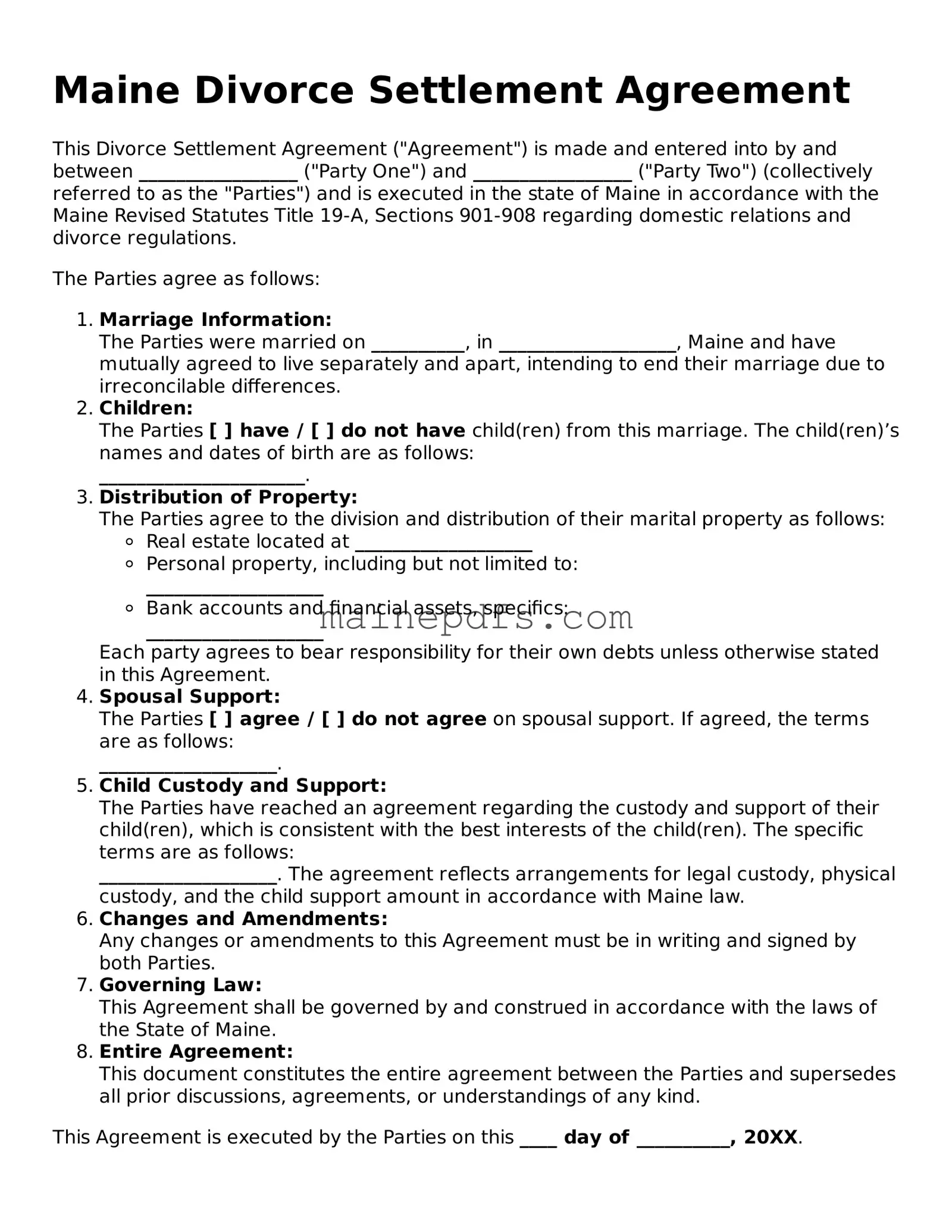The Maine Divorce Settlement Agreement form shares similarities with the Marital Separation Agreement. Both documents are critical when couples decide to live apart and need to detail the terms of their separation, including asset division, child support, and spousal support. They set out the agreed upon terms to avoid future conflicts, ensuring a smoother transition for both parties involved.
Comparable to a Property Settlement Agreement, the Maine Divorce Settlement Agreement outlines the distribution of marital property and debts. This ensures that both parties have a clear understanding of who gets what, helping to prevent future legal disputes over assets. It covers everything from real estate to personal property, mirroring the comprehensive nature of a Property Settlement Agreement.
Another document similar to the Maine Divorce Settlement Agreement is the Child Custody Agreement. Both documents include provisions related to the welfare of the children involved, specifying custody arrangements, visitation schedules, and child support payments. This focus ensures that the children's needs are prioritized in the aftermath of a divorce.
The Spousal Support Agreement also shares elements with the Maine Divorce Settlement Agreement, specifically in terms of arrangements for financial support to a spouse post-divorce. Such agreements detail the amount and duration of payments, reflecting a common concern addressed in divorce settlements to ensure fair support for a lower-earning spouse.
Like a Prenuptial Agreement, which outlines asset division and financial arrangements before marriage, the Maine Divorce Settlement Agreement addresses similar issues but post-marriage. Both documents serve to protect individual interests, either in anticipation of a marriage or during the dissolution of one, making the division of assets more predictable and less contentious.
The Postnuptial Agreement, similar to a Prenuptial Agreement but executed after marriage, aligns closely with the Maine Divorce Settlement Agreement. Both serve to settle financial matters and asset division between spouses, but the Postnuptial Agreement does so during the marriage rather than at its end. However, both share the ultimate goal of clarifying and securing each party's rights and obligations.
Debt Settlement Agreements, while primarily focused on settling debts between creditors and debtors, share the concept of negotiation and settlement found in the Maine Divorce Settlement Agreement. Both involve detailed negotiations to reach a mutually acceptable resolution, albeit in different contexts—financial obligations in one, and marital dissolution terms in the other.
The Parenting Plan is another document with similarities, especially concerning child-related provisions in the Maine Divorce Settlement Agreement. It explicitly outlines how parents will share responsibilities and make decisions impacting their children’s lives, emphasizing the child's best interests in both scenarios.
The Cohabitation Agreement, used by couples who live together without being married, also mirrors aspects of the Maine Divorce Settlement Agreement, especially in terms of asset division and financial arrangements should the relationship end. While one applies to married couples and the other to cohabitating partners, both aim to prevent disputes over shared assets and responsibilities.
Lastly, an Employment Separation Agreement, which outlines the terms under which an employee leaves a company, shares the aspect of clearly defining the rights and obligations of each party post-separation. Though it pertains to employment rather than marriage, the principles of negotiated terms for a smooth transition and prevention of future disputes are central to both documents.
